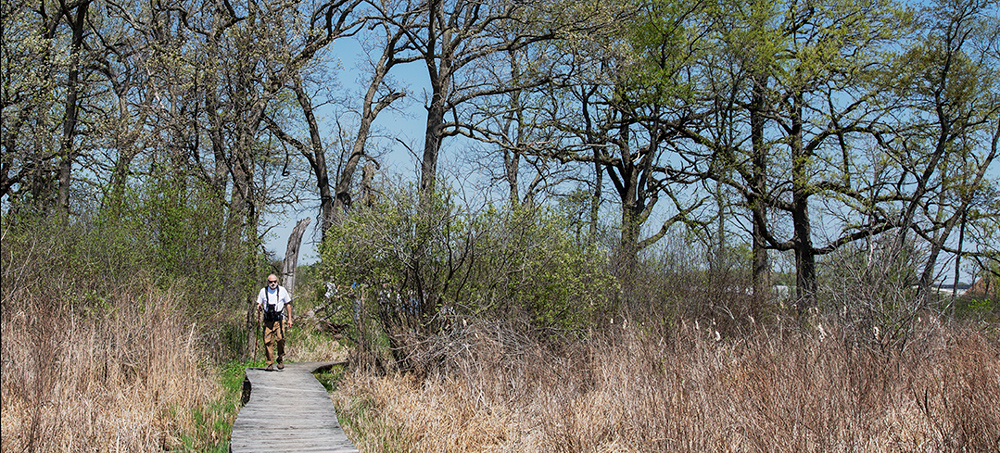
Hiking Hartland Marsh and the Ice Age Trail
May 21, 2018 | Topics: Places
By Eddee Daniel
Spring was still trying to catch up from our unseasonably cold April last week. But this day dawned brightly and suddenly turned unseasonably hot. Shedding jackets, a dozen or so of us gathered at the Cottonwood Wayside for a hike into Hartland Marsh led by Jeff Romagna, a volunteer with the Ice Age Trail Alliance.
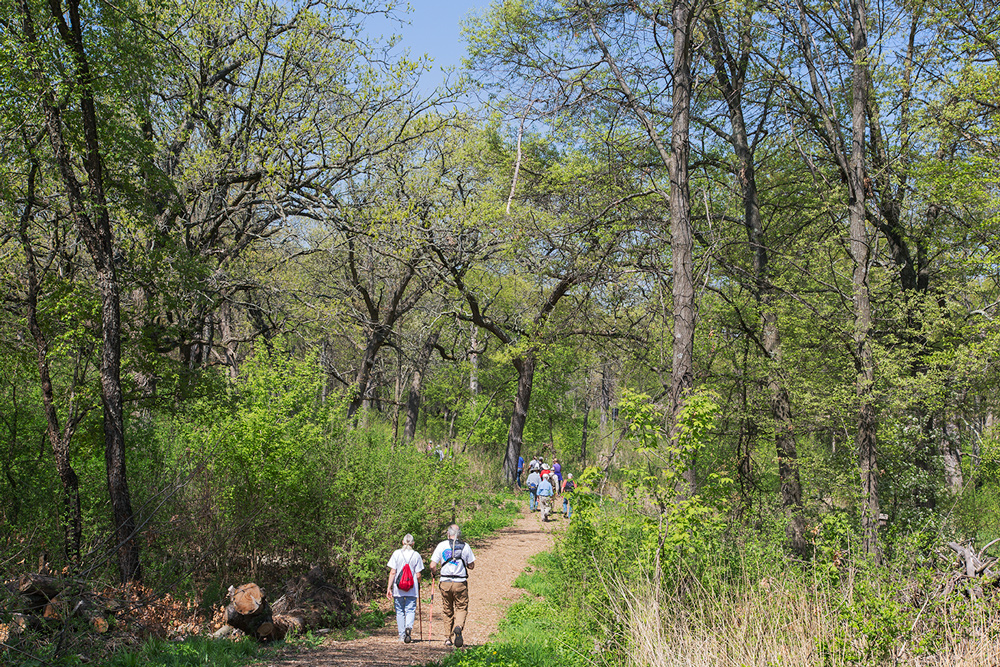
Hartland Marsh Preserve is nestled between the Lake Country Industrial Park and the Gleason Commerce Center in Hartland. Its 180 acres is protected by the Waukesha County Land Conservancy in partnership with the Ice Age Trail Alliance and the Village of Hartland. The Bark River meanders through the middle of it, somewhere out where we couldn’t see it from the Wayside.

Our tour began on a mulched path, known as the John Muir Overlook, through a hardwood forest featuring ancient bur oaks. The trail narrowed, then led to a boardwalk across the marsh and over a small wooded island. Birds were plentiful, it being migration season.
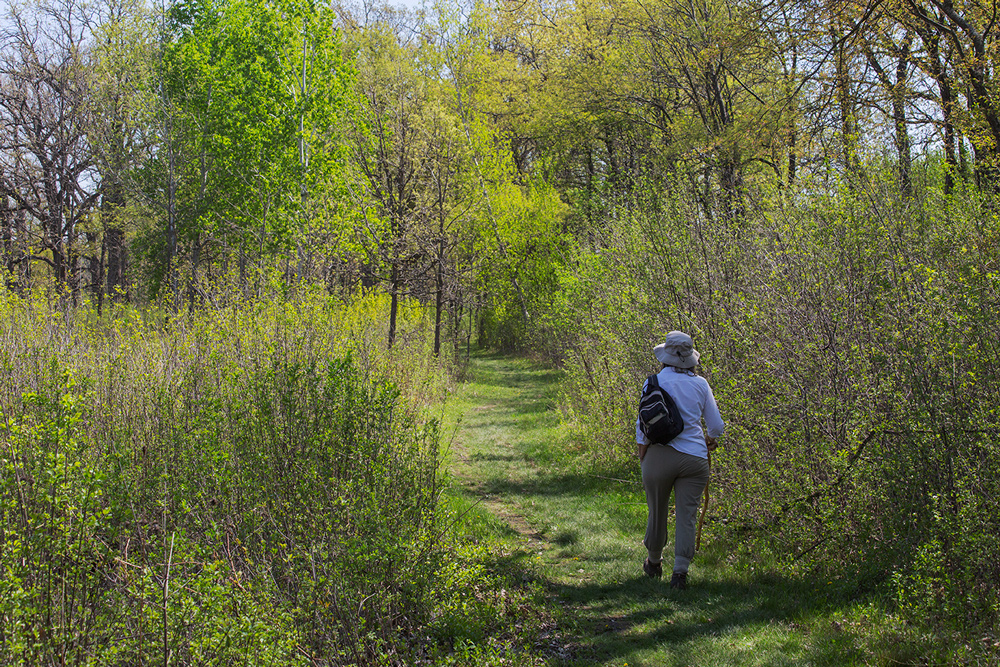
Another boardwalk looped through last year’s cattails and back to the forest. Here the trail was hemmed in with thickets of buckthorn.
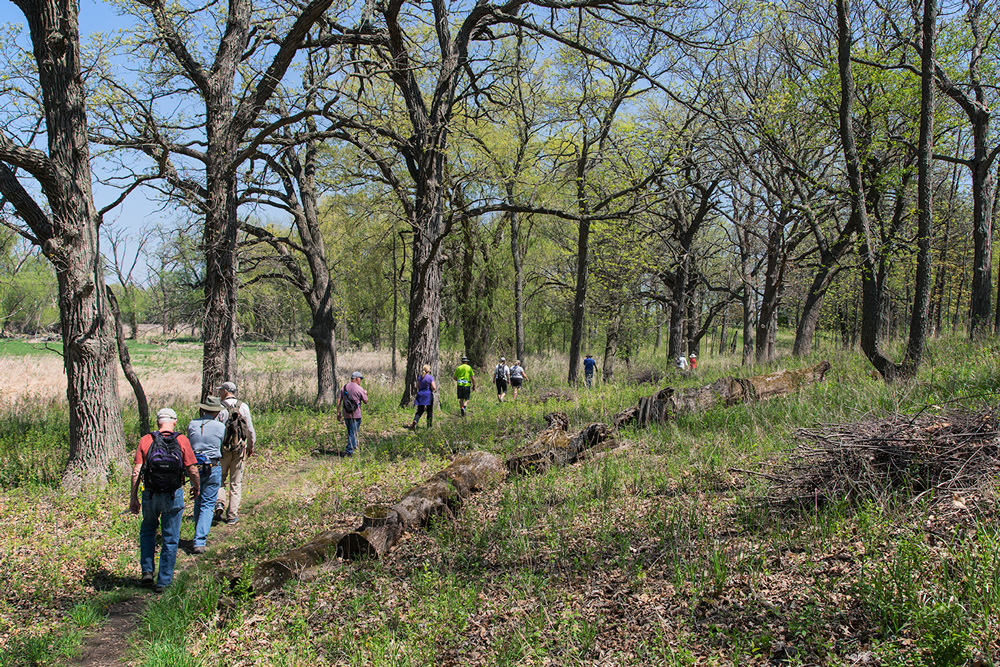
Most of the preserve has a far more open understory and the difference was striking. Jeff, our guide, introduced us to Paul Mozina, known as The Buckthorn Man, whose volunteer efforts have been largely responsible for removing this particularly obnoxious invasive species. Along with being more aesthetically pleasing to hike through, the cleared portions enable a more robust diversity of native species to flourish.
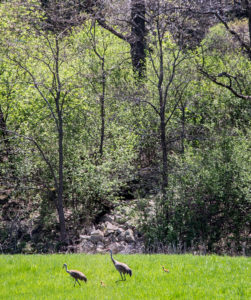
Across an open field we watched as a pair of sandhill cranes shepherded two chicks away from us towards a pond.

A side trail led us through a beautiful glade, over a hill and across the Bark River on a footbridge to another small island. Paul pointed out the many natural springs around the two hills that had led to its being a homestead, now vanished.
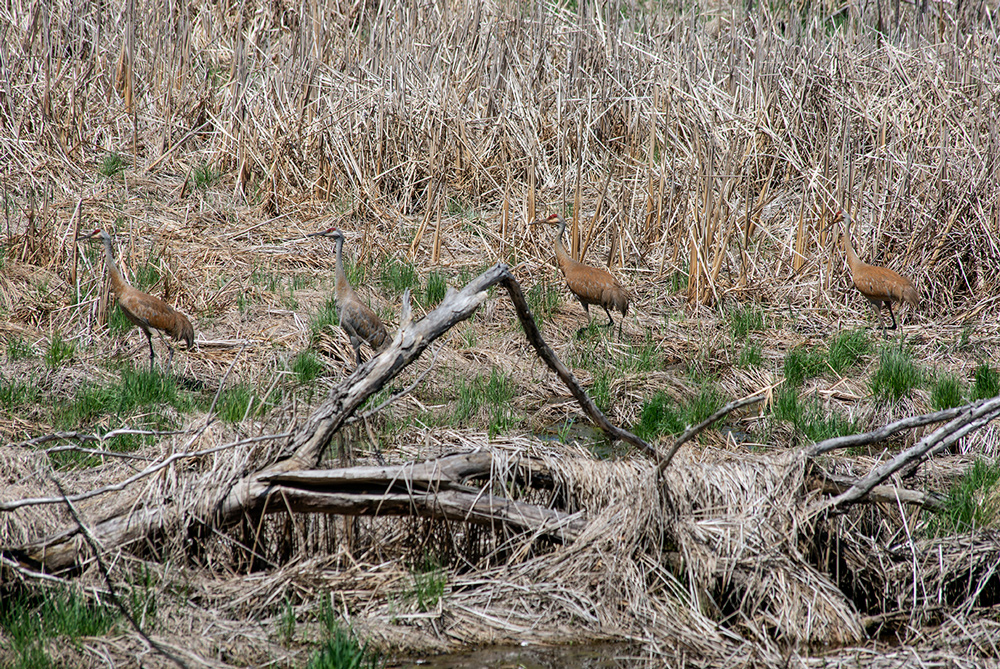
Four more sandhill cranes watched us warily from the marsh, their colors a nearly perfect match with the dead cattails.
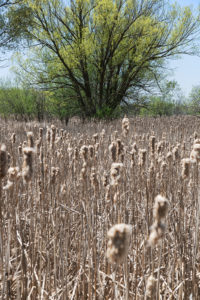
According to the Ice Age Trail Alliance, wetland preserves like this are becoming more and more important as land is developed and urbanized. Wetlands serve critical ecological functions that help maintain environmental health as well as sustaining wildlife habitats.
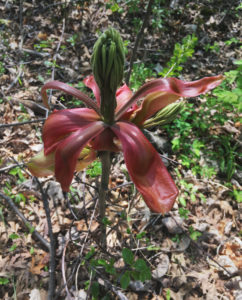
Hickory sapling in bloom
By absorbing rainwater and nutrients, a marsh helps reduce flooding, prevents shoreline erosion along waterways, recharges groundwater, and enhances water quality.

Preserves like this one also provide opportunities for recreation, research and education, serving as both a laboratory and outdoor classroom for students and teachers.
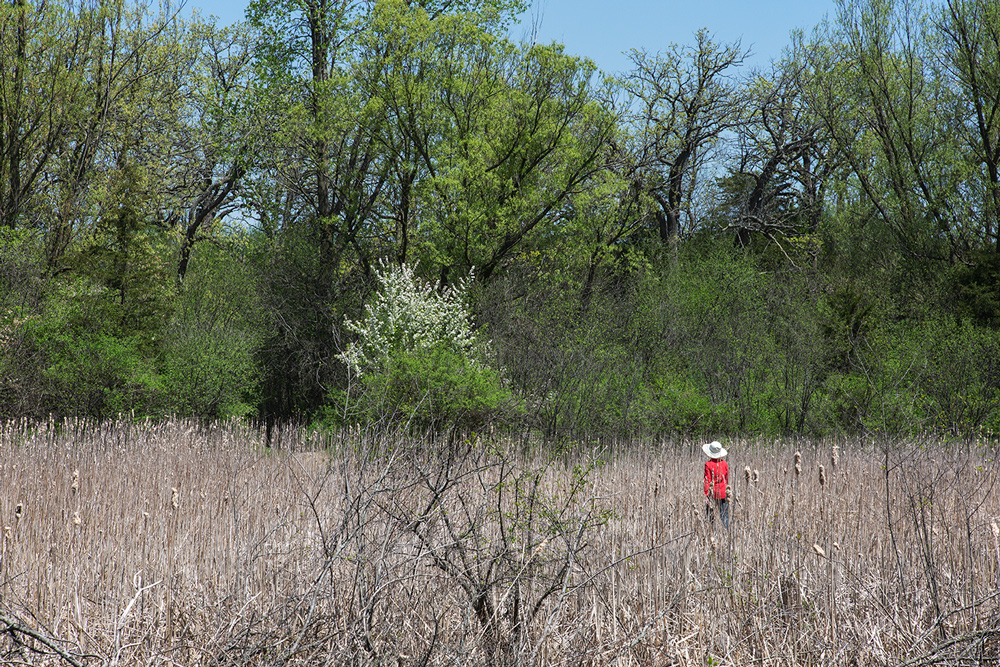
The John Muir Overlook is a 1¼-mile loop linked (across Cottonwood Avenue) to the Hartland segment of the National Ice Age Scenic Trail. We hiked east along a portion of the trail until we reached the Aldo Leopold Overlook. The 45-foot tall glacial hill—which could be an esker or a moraine, according to Jeff—gave us views of the surrounding marsh. As we turned to go, a pair of brilliant white egrets sailed in to land on an open pond.
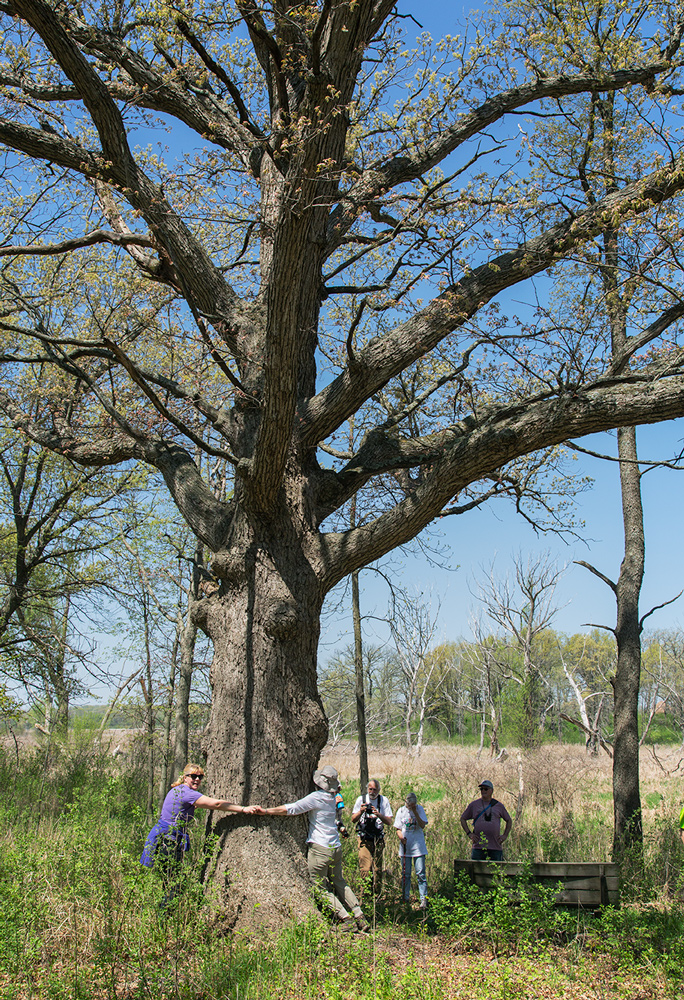
Tree huggers! It took three to reach around this enormous oak.
Eddee Daniel is a board member of Preserve Our Parks and the project director for A Wealth of Nature.

